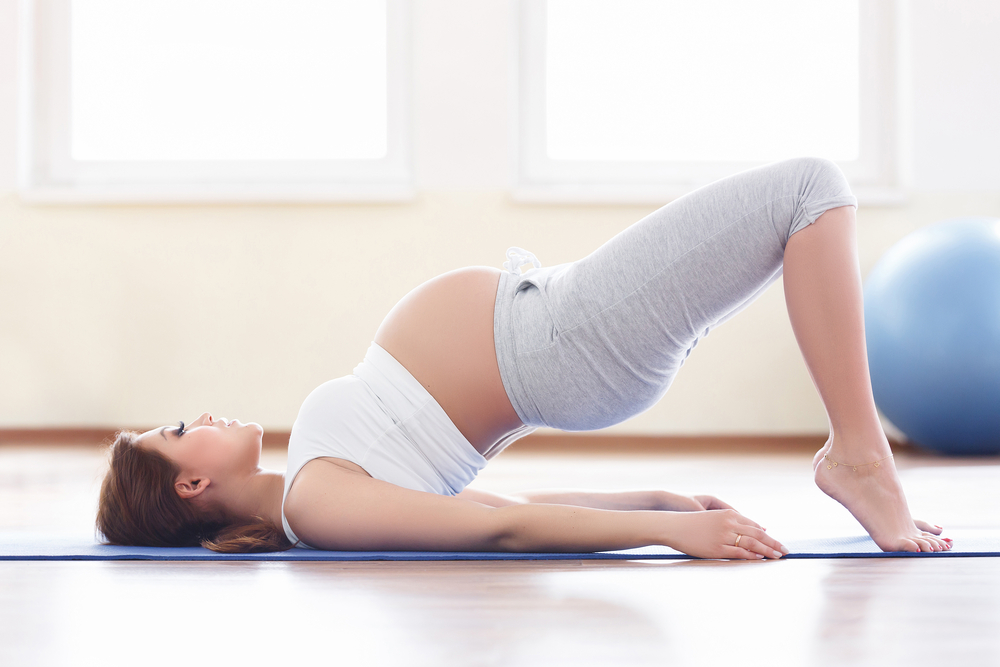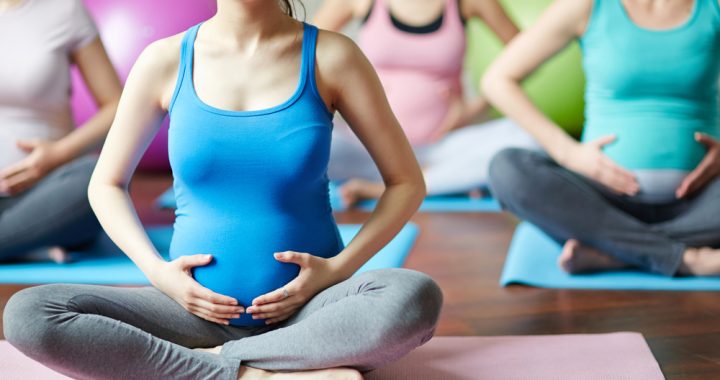In addition to working on toning and muscle elasticity, practising yoga during pregnancy helps you relax and prepare your body for childbirth
Yoga and pregnancy go hand in hand when it comes to avoiding stress and relieving tension and, regarding more physical aspects, providing excellent protection to the spine, so that the body is able to accommodate all the changes that come with pregnancy. Having said that, it’s advisable to practice it from the third month onwards, when the pregnancy is completely settled, if you don’t normally practice yoga.
What’s a yoga session for pregnant women like?
A yoga session for pregnant women begins breathing gently in an easy position and with Kegel exercises, which strengthen the pelvic floor to avoid incontinence, aggravated by the baby’s weight. It continues with a warm up and with asanas on the floor, especially focused on making the hips more flexible and aligning and strengthening the back muscles to distribute body weight well.
The session continues with standing asanas working on strength, balance and movement-breathing coordination, and then back to the floor to continue working on the hips and Kegel exercises. The session ends by relaxing with your legs up against the wall and in a foetal position on your left side or some other variant.
Sessions adapted to pregnancy
From the sixth or the seventh month of pregnancy, upward facing positions are uncomfortable because the weight of the baby presses against the diaphragm and makes breathing difficult. It will only be advisable to adopt them if you’re leaning your head and upper part of your back on blankets or pillows that keep these parts of the body higher up and so helps with breathing.
During the first trimester, the workout is more relaxed and focuses on meditation and self-discovery. During the second trimester, the asanas focus on breathing, with the aim of reducing tension in the areas that suffer the most: back and hips. Relaxation techniques and pranayama (to control the breath) are used in both trimesters to stabilise emotions during pregnancy and reduce the fear of childbirth, stress and fatigue.
What are the benefits of these sessions?
Among the many benefits yoga provides during pregnancy, the best are a pleasant feeling of general well-being, posture re-education that reduces back pain and makes you less tired, the improvement of breathing, the opening of the hips and strengthening of your back muscles and pelvic floor.
What do you need to keep in mind during yoga sessions for pregnant women?
A woman’s body changes throughout the nine months of pregnancy and, therefore, the sessions have to adapt to this new reality:
- The mother’s activity should be moderate, without generating too much heat, especially during the first trimester, because the baby’s nervous system is being developed.
- Avoid flexing or stretching your muscles beyond your possibilities, that is, don’t push yourself during asanas and spend less time in each position to avoid fatigue.
- Try not to move producing a prolonged elongation of the abdominal muscle.
- During pregnancy, there is a decrease in blood flow to the uterus and that’s why it’s essential to avoid stretching too much and long face-down positions, especially after the first trimester.
- It’s important to always work with your legs apart, at least in line with your hips. We recommend expectant mums visualise the baby doing the positions at the same time as them.
- Avoid intense twisting and refrain from doing sit-ups.

Come try a session!
Yoga One centres offer classes for pregnant women on several days of the week, which you can also combine with other styles such as Restored Yoga or Introduction to Yoga. You can check the times and find out more on this link.
Other activities that are suitable for pregnancy are: water activities, Tai-chi, Postural Re-education, Mind Body… In short, classes that will help you relax and prepare, physically and mentally, for childbirth. You can check the times for these activities on our website.
